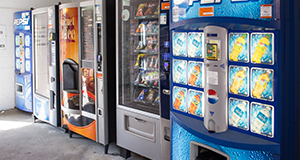Five years after leaving their hometown, two friends reconnect. The first friend moved to the heart of a big city, and the second relocated to the suburbs.
They take a long stroll around the city and catch up on half a decade of small talk about life, family, community, and work. The first friend grows quiet when the topic of health comes up, but eventually reveals his displeasure and concern with both his current eating patterns and his weight management difficulties.

The second friend, the eternal advice giver, rattles off his own favorite eating patterns, recipes, and farmers markets. The first friend urges the second to take a look around him. Storefronts of former groceries and markets now house fast-food places, restaurants, and convenience stores, full of processed and shelf-stable food options, but devoid of fresh ones.

The two walk past a new supermarket, which the second friend has seen in his area but has always avoided due to its infamously high prices.
According to the first friend, a farmers market has opened on the opposite edge of the city, where the bus route he takes does not go. Additionally, with the extra handful of side hustles he has picked up to cover his ever-increasing rent in the city, he has no idea when or if he will be able to visit that market, or how he might sustain regular treks there.
Although food is a basic need, food access is not always a straightforward matter. The story above gives a quick glimpse at food environment disparities, or food apartheid.
A recent publication from the UF/IFAS Department of Family, Youth and Community Sciences provides key insights about community food environments, food and nutrition security, different types of food environment disparities, and factors that worsen these disparities. Several elements, such as a lack of accessible supermarkets or grocery stores, a lack of dependable transportation, an abundance of inexpensive but unhealthy food options, or prohibitive costs of healthy food, characterize different kinds of disparities.
For more information on topics such as food insecurity and urban agriculture, remember to Ask IFAS.
 2
2
